August 18, 2011
During the space of one summer in 2007 I went from Papua New Guinea to the Arctic. I went from the bottom of the planet to the top; from swimming underwater on coral reefs in the southern hemisphere to cruising through ice on Hudson Bay in the northern hemisphere. From bottom to top; from under to over; from tiny to huge. Flying back home to NYC after leaving the Arctic I slowly woke into that transitional airspace between asleep and awake where I saw these two extremes of nature as connected. It gave me the idea for Coral & Ice–my first solo photo exhibition held at the National Arts Club in New York City–where I juxtaposed images of ice from the top of our planet with tiny corals and creatures from the underwater world I shot worldwide over the years. I edited through hundreds of photographs and as I laid out images on my light box and matched them up to flow visually together for an under/over theme, I realized that all these icebergs I shot were melting and all these corals had vanished. I was shocked. This was an “aha”moment which changed how I view the world and made me want to promote conservation and environmental awareness through my work.

I remember so vividly when my daughter Emily (now 30) was 13 months and we were on assignment in the Red Sea. I was swimming around underneath our live-aboard dive boat at dusk when all the coral polyps come out to feed on tiny plankton drifting by in the gentle current. Dusk is a time of changeover in the sea when day creatures disappear into the protecting reef and night critters emerge in a flurry of activity. Soft corals are transformed into undulating forests harboring tiny creatures such as the red crab on the pink coral branch (bottom left.) Up on deck just above me in a makeshift swing rigged up by the crew, Emily was happily swinging back and forth in the soft evening breezes of the Sinai desert. I was Alice swimming around in a Wonderland of pinks, purples, lavendars, yellows, oranges–magical soft coral bushes of improbable flowers illuminated by underwater lights and the lengthening light rays of dusk. I couldn’t wait to someday show this magical world to my daughter. And when Emily was old enough to dive here at my favorite spot in the Red Sea, these corals were all gone. In the short time she has been on this planet pieces of the natural world have disappeared, been destroyed.
The Coral & Ice series consists of twelve giant panels–each 40 inches wide by 60 inches high. Being in a room surrounded by all of them imparts a sense of the vastness of nature. And how the smallest branch of red coral is part of the same world as a huge white iceberg transected by turquoise lines of melt water (panel below right.) The boat driver’s red jacket ties the two images together in this panel and provides a visual sense of scale that cannot be properly described in words: humankind’s place in monolithic nature.
Corals are animals—not plants—despite their flower like appearance. Made up of millions of polyps (which means “tiny mouth” in Latin) corals feed on rich planktonic broth in the evening sea—part of a delicately balanced food chain that can be destroyed with damage to just one link.
So much on our planet is now so connected in a need for conservation and change. I remember returning from a dive trip to the remote Eastern Fields between Australia’s Cape York Peninsula and Papua New Guinea. Foggy in jetlag I slowly emerged from the subway onto the teeming streets of mid-town New York City and I kept flashing on the thousands of silvery grunts I had just seen sweeping across those pristine reefs laughing to myself because our streaming city streets are connected to those teeming coral reefs on the other side of the world — it’s just that all these people running around in the city don’t know that yet! We are all teeming and streaming together here on Planet Earth.
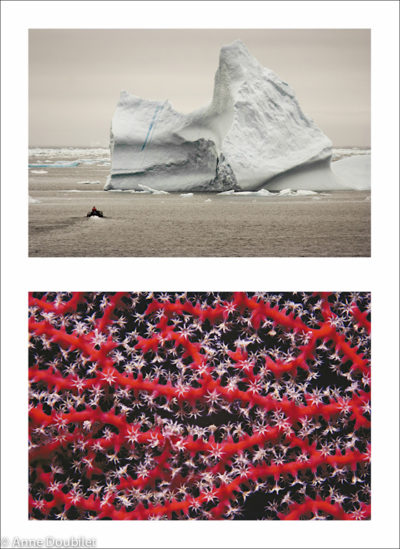


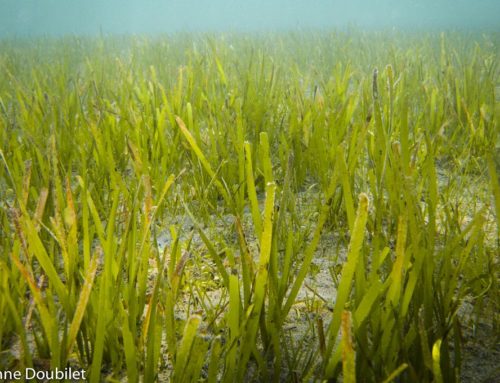

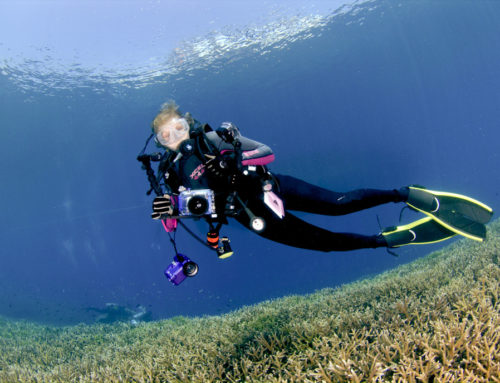
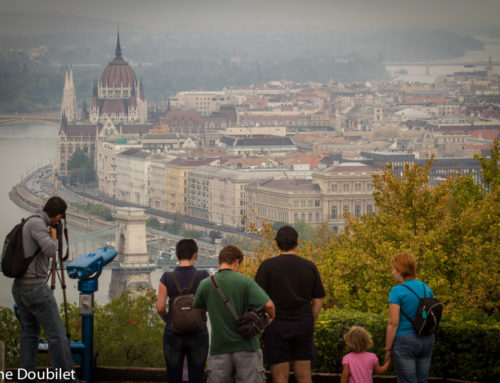
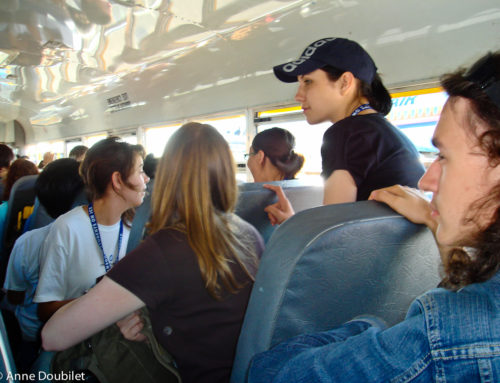
Leave A Comment